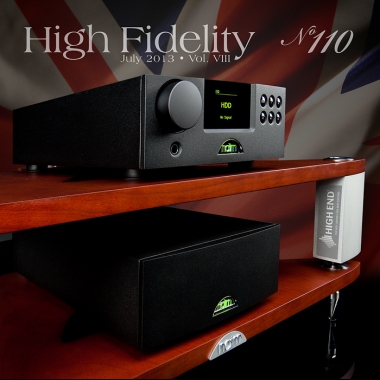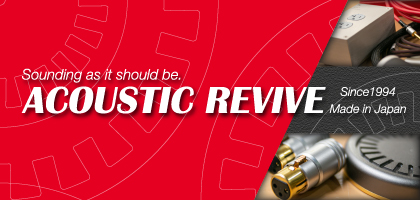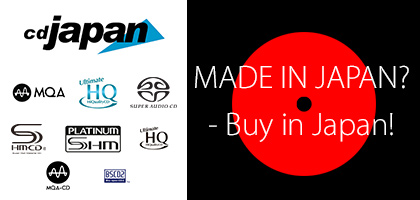 Contents
Contents
No. 257 October 2025
- COVER REVIEW: ANCIENT AUDIO Silver Grand Mono Mk II ⸜ power amplifier • monoblocks » POLAND • Kraków
- KRAKOW SONIC SOCIETY № 153: 30 years of ANCIENT AUDIO » POLAND • Kraków
- FEATURE ⸜ music & technology: HISAO NATSUME presents - In search for the lost great pianism Chopin tradition » part 2 (France) » JAPAN • Tokyo
- REVIEW: AUDIOPHONIQUE Classic AP 300D ⸜ power amplifier » POLAND • Pruszków
- REVIEW: AVATAR AUDIO Holophony No. 1 ⸜ loudspeakers • floor-standing » POLAND • Osowicze
- REVIEW: DIVALDI Gold PA One ⸜ integrated amplifier » POLAND • Kraków
- REVIEW: J.SIKORA Aspire ⸜ turntable (deck + tonearm) » POLAND • Lublin
- REVIEW: MB AUDIO CABLE Silver ⸜ analog interconnect ⸜ RCA » POLAND • Turza Śląska
- REVIEW: XACT N1 ⸜ LAN switch » POLAND • Wrocław


|
MY FIRST SYSTEM 
Hello! 
PS If you could also suggest something when it comes to the stereo, I’d be extremely grateful – I’ll read more about it before I go to audition things. I’d like a computer or an external hard drive to be the source – could the computer be a few meters away from the system? I listen to everything (drum and bass, house, progressive, dubstep, hip hop, sometimes jazz and something calm as well as many different kinds of rock). I’d be extremely thankful if you could give me some ideas for a system. Purchasing an audio system can either be an irrelevant episode with “weight” comparable to buying a vacuum cleaner or an iron, or a watershed moment, changing us forever. Any sort of activity can become an immersive and even self-defining hobby. It’s best when this hobby is somehow also your profession (as in my case) because we can allocate a lot more time and resources (cash, simply speaking) to it. This is a rare case, however, and most music lovers who also became audiophiles must divide their time between their career, family, many other activities and music. By saying “audiophile” I mean someone who performed a “leap of faith” to finally – often for the first time in their life – hear a music track in conditions similar to those imagined by the artist and recording producer. I saw a picture once (I don’t remember where, at the moment) which illustrated this very well: a recording studio – a hundred thousand USD; a mixing table – several thousand USD; a microphone – a few thousand bucks; an MP3 player – a hundred USD; and headphones for 99 cents. It really shows how one wastes the potential of a recording when using trashy products which have very little to do with music. This treatment of a record (or file) makes it impossible to fully understand the track you’re listening to, reducing it to a melody, ridding it of its sonorous pronunciation which is only audible when we play music with a well-prepared audio system. 
While browsing magazines about hi-fi and high-end you’ll notice that most of their contents are tests and descriptions of expensive products. “High Fidelity” is no exception to this rule. It is forced, to some extent, by the market, where the basic price range (say, up to 2,000 PLN per component) is rather poorly represented (and it’s getting worse). But it’s also because it’s the hobby of the editors of these magazines, who reach for the devices, speakers and accessories that interest them and broaden their knowledge – usually pricey devices. There are two more aspects that reinforce the way things are. One is obvious – expensive, exclusive products bring most joy. The readers of car magazines see a Lamborghini, a Bugatti or another top-class automobile and dream about having something like that one day, all while being full aware that this dream probably won’t ever come true. It is a “bait” that all magazines use. But there’s another aspect that must not be omitted – expensive products designate the current level of technological development in a field, they define what is possible at the given moment; they are most often the carrier of innovation, and new ideas that cannot be realized in cheap products are realized in the expensive ones. “State-of-the-art” audio devices are necessary, for example, to draw out the horizon of what is possible. Most of the solutions used there will make their way to the lower price ranges sooner or later, enriching our knowledge and pushing forward the whole audio trade, not only its exclusive top range. If one was to graphically represent the number of people who use audio devices, depending on their price, one would receive something pyramid-shaped, with a spiky top and very wide base. Most music lovers obviously use the devices from the lowest price range. This system could cost around 7,000 PLN. 
To begin your adventure in the audio world you have to make the decision on buying a system for music playback. And I’m thinking about a real system, not some random mini-speaker set or – even worse – home cinema. The easiest method is to focus on headphones. The explosion of this market sector, connected with file players, most commonly Apple mp3 players (although they usually aren’t really mp3 players), as well as computer systems, means we have a wide variety to choose from. The simplest system is just a cellphone with good headphones. No, I’m not joking – I’m thinking of your cellphone’s radio. Many years ago, back in the day when I worked for “Sound&Vision”, my wife bought me a portable, tiny Aiwa radio (the company doesn’t exist anymore, liquidated by Sony when they bought them). Listening to Polish Radio III, and then to Polish Radio II on the train, tram and bus really got to me and gave me lots of happiness. When the device broke, I smoothly transitioned to listening to the radio on my phone. Because I became seriously interested in it, I can responsibly say that the sound quality of a cellphone’s headphone output differs dramatically from model to model, but is quite good in better phones. |
Either way – it’s the simplest way to listen to music. You just need to get some good headphones and you’re good to go. It’s worth testing them out with your phone, though, because they often have a short connecting cable. It’s important, because the headphone cable works as an aerial – a short one won’t provide a sufficiently strong signal. The next step can be buying a small file player (but not an mp3 player!!!) which plays files in CD quality (at least), either the uncompressed WAV format, or the lossless FLAC. A portable player and headphones would only extend the radio situation. A step forward would be using a computer as a file player. And this is where the current market trends help us. You have to install some good software, like foobar2000 or iRiver and equip yourself with an external DAC with a USB port and headphone amp. And some headphones, too. Good converters/amps, such as the mini DAC or HUD-mx2 from Audinst, or even the hiface DAC from M2Tech, would be just right. In the future you could additionally buy JPlay, which works with foobar’s and iRiver’s “skins”, and you’ll get an even better sound. This system will allow you to play CD-quality and high-res files. You could buy some good headphones for this, e.g. the HE-300 HiFiMAN. It can also be a base for a more complex system. Having a digital player, which a computer-and-DAC combo is, you can take a step forward out of the headphone and into the speaker world. You can plug in active speakers to the Audinst and M2Tech and place them before you, on a table/desk, where you’ve got your PC/laptop screen. It’s worth getting good interconnects and network cables. It could be something from Chord or Supra http://www.jenving.se - they’re proven solutions. The speakers should be placed as far apart as possible, facing toward your ears, and you’re set. To decouple them from the table you can put them on a neatly-cut, polished wooden board, adding to their aesthetics, and place the speakers themselves upon small spikes. That’s how you’ll get a really nice system for a sensible amount of money. 
The system we just described is based around a computer acting as the sound source. Along with the speakers it forms a system which would be called a “computer” system. It can, however, be extended, or you can focus on the next step – moving the speakers away from where the computer is. The first option will fulfil the basic criterion that Mr. Przemek set up for the system – it will sound well and you’ll be able to have a party around it. Real listening sessions will be limited to the space around the computer, though, meaning while you work, game and browse the Internet. If we move the speakers out, we’ll be talking about a classic audio system, with a computer used as a source. And that addresses Mr. Przemek’s Post Scriptum suggestion. 
The drawing Mr. Przemek sent shows that part of the triangular sofa will be in front of one of the speakers. It’s an unfavorable situation, because the speakers will be working in a different acoustic environment. And that means we won’t get an accurately recreated soundstage or good tone. Moving the whole thing could be a solution, as in moving the speakers to the right, to at least partially take the left speaker out of the corner – that’s another unfavorable setup. If you can fulfil all of the aforementioned prerequisites, and you put some thick carpet on the floor, then everything will be good. It would be even better if the wall the speakers stand against was covered with bookshelves. You could also use some great-looking acoustic panels from Vicoustics (we wrote about them recently HERE). The speakers should be placed on spikes, and the spikes upon low platforms, preferably made of wood (about 3-5 cm high). 
To sum up: we’ve summoned a complete system to life in a particular room. It can stand up to 5 m from the computer, which is the longest possible USB cable length. This is not the only solution. We can focus on a classic integrated amp, e.g. the Music Hall a15.2 or 15.2 and a D/A converter, e.g. the Cambridge Audio DACMagic 100, the Arcam iLink or the rPAC (with a USB port), the Audinst or the M2Tech. A better, but more expensive choice – the Hegel HD2. Or you could give up on the computer and switch to a file player. And here’s where many new possible paths open up. If you’d accept a slightly bigger expenditure, you could do it quite elegantly, without taking up much space. You’d buy an all-in-one player like the Naim UnitiQute, which is a file player/Internet radio, FM radio and stereo amplifier, for 6,000 PLN and some Audio Academy or Monitor Audio Bronze-series speakers. Plus the cables. There’s a new series of similar devices from NAD, like the D7050 and others. I saw them at the show in Munich with Dynaudio speakers from their latest Excite series – marvellous sound (see the coverage of the event in the June edition of “High Fidelity”). Each of these solutions is an entrance into the true world of kickass audio. It’s worth the time and money, because it will more than pay for itself. These are only a few possibilities, but they’ve been tested by me – I’ve heard them all. You can see the system with Arcam’s electronics and Castle’s speakers HERE, and the system, in which I used Arcam’s iLink DAC HERE. I can imagine a system with an Arcam amp, Audio Academy or Knight-series Castle speakers, Arcam or Cambridge Audio DAC, and Chord cables, which will be equally good as the ones mentioned above. Starting with one of these is like being born again. “I’m an Audiophile and proud of it” series
For sale To all those who would like to buy some audio gear from a trusted source without spending a fortune, I have some equipment to offer either from my own system or after my reviews. 1. Acrolink Mexcel 7N-2100 analog interconnect. A beautiful cable (which can also be used as a digital S/PDIF cable), sent directly from Japan. In perfect condition, after a review. No box to go with it. For sale is the 2 m test version. Review HERE. Asking price – 6,000 PLN (2 m), the list price – 11,000 PLN for the 1 m version. 2. Acrolink 8N-A2080III Evo analog interconnect, 1.5 m. It’s a limited edition, only 250 copies have been available. Review HERE. Asking price – 5,000 PLN (1.5 m), the list price – 9,900 PLN. Perfect condition, no box. 3. Tunami Oyaide GPX-Re power cord. Unused, still boxed. Review HERE. Asking price – 2,300 PLN per one cable, the list price – 3,590 PLN. 4. Acoustic Revive RAF-48 isolation platforms (air floating; under CD players and amplifiers). I have two for sale, brand new, still in original boxes. Came straight from Japan. I personally use them in my system. The review can be found HERE. They are one of the best ways of improving the sound I know. Asking price - 3,500 PLN per piece, the list price - 4,690 PLN. 5. Wireworld Platinum Eclipse RCA-RCA analog interconnect, 2 m. Reference cable for American Wireworld, of a rare two meters length. Its list price is prohibitive, but from me it’s at your arm’s reach. Useful wherever a greater distance from the source to the amplifier prevented you from purchasing a reference cable. Now it is possible. List price – 22,390 PLN, offers welcome. Condition - very good. Complete with a metal case and certificate of authenticity signed by David Saltz, the owner of Wireworld. 6. SAEC OPC-X1 optical digital cable, review HERE. It’s a reference optical cable, one of the best I know. Practically unavailable outside Japan. Asking price – 1,000 PLN / 1 m, the list price - 650 EUR. Virtually new, used once, for a review. 7. SAEC XR-4000 analog interconnect (balanced), review HERE. Asking price – 2,000 PLN, the list price - 980 EUR. Virtually new, used once, for a review. 8. Acoustic Revive Power Reference power cord. Reference power cord from this Japanese manufacturer. Used for two months, after review. Mint condition. Review HERE. Asking price – 3,000 PLN/2 m, catalog price – 4,390 PLN/2 m. 9. Acoustic Revive RST-38 isolation platform, used, x 1. Not in perfect condition, I have used them for some time, hence the price. Asking price– 1,250 PLN, the list price – 2,790 PLN. 10. Arcam Solo Movie 5.1 DVD/SACD/HDCD/CD player, multi-channel amplifier. A long name, but it’s a purist unit. Combination in a single housing an audiophile audio and video player, and a 5-channel amplifier - all in the Arcam quality. Original price - well over 10,000 PLN, asking for any offers. I used the player for a year; the amplifier section has never been used. Mechanics has been replaced for new. It sits in a box, which is a shame; should better bring some joy to someone. Review HERE. 11. Oyaide AR-910 analog interconnect, 1 m, balanced, pure 5N silver. New, still boxed, sent straight from Japan. Description HERE. Asking price – 1,300 PLN, the list price – 2,100 PLN.
|
About Us |
We cooperate |
Patrons |
|
Our reviewers regularly contribute to “Enjoy the Music.com”, “Positive-Feedback.com”, “HiFiStatement.net” and “Hi-Fi Choice & Home Cinema. Edycja Polska” . "High Fidelity" is a monthly magazine dedicated to high quality sound. It has been published since May 1st, 2004. Up until October 2008, the magazine was called "High Fidelity OnLine", but since November 2008 it has been registered under the new title. "High Fidelity" is an online magazine, i.e. it is only published on the web. For the last few years it has been published both in Polish and in English. Thanks to our English section, the magazine has now a worldwide reach - statistics show that we have readers from almost every country in the world. Once a year, we prepare a printed edition of one of reviews published online. This unique, limited collector's edition is given to the visitors of the Audio Show in Warsaw, Poland, held in November of each year. For years, "High Fidelity" has been cooperating with other audio magazines, including “Enjoy the Music.com” and “Positive-Feedback.com” in the U.S. and “HiFiStatement.net” in Germany. Our reviews have also been published by “6moons.com”. You can contact any of our contributors by clicking his email address on our CONTACT page. |
 



|
   |
main page | archive | contact | kts
© 2009 HighFidelity, design by PikselStudio,
projektowanie stron www: Indecity











